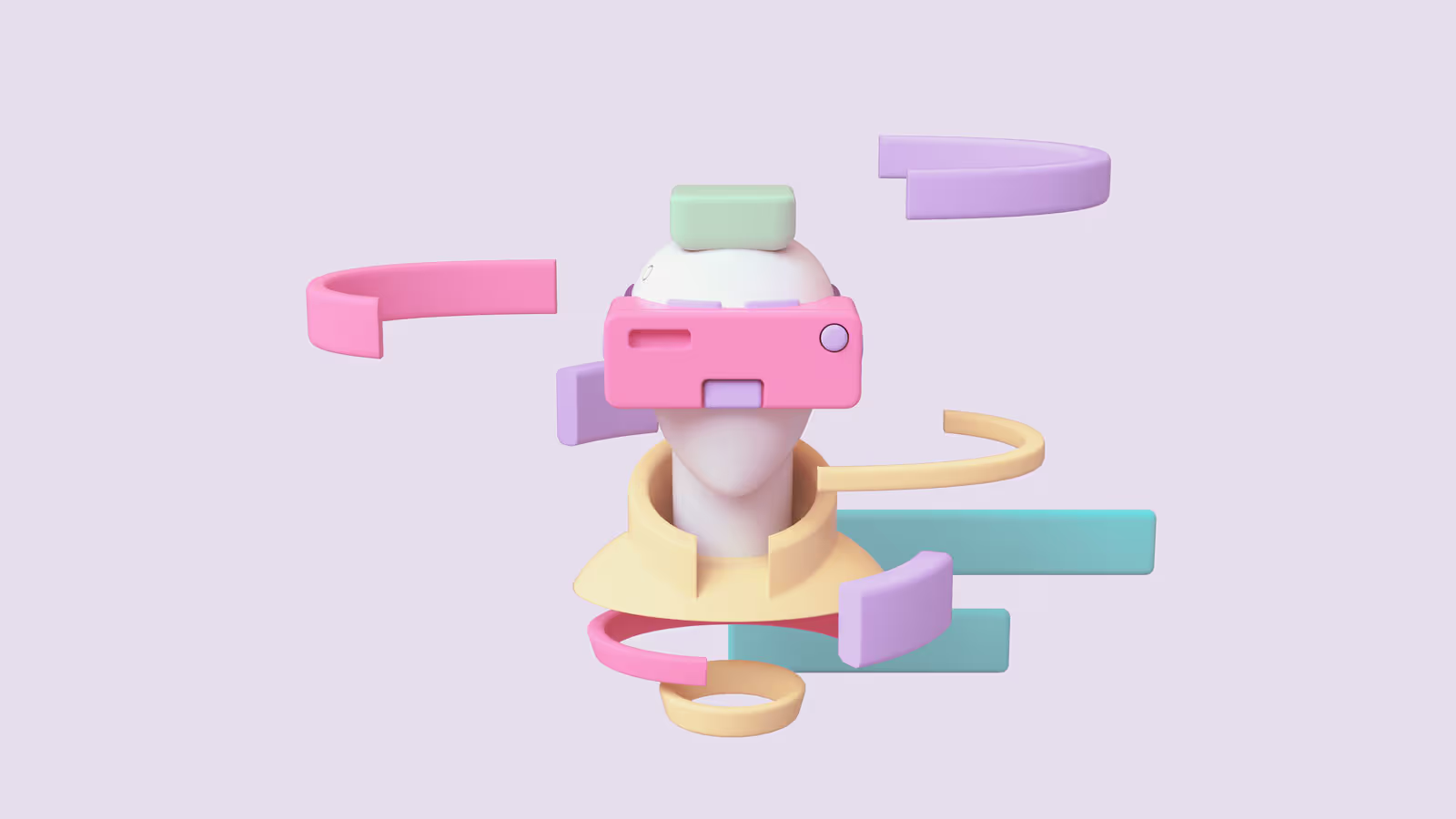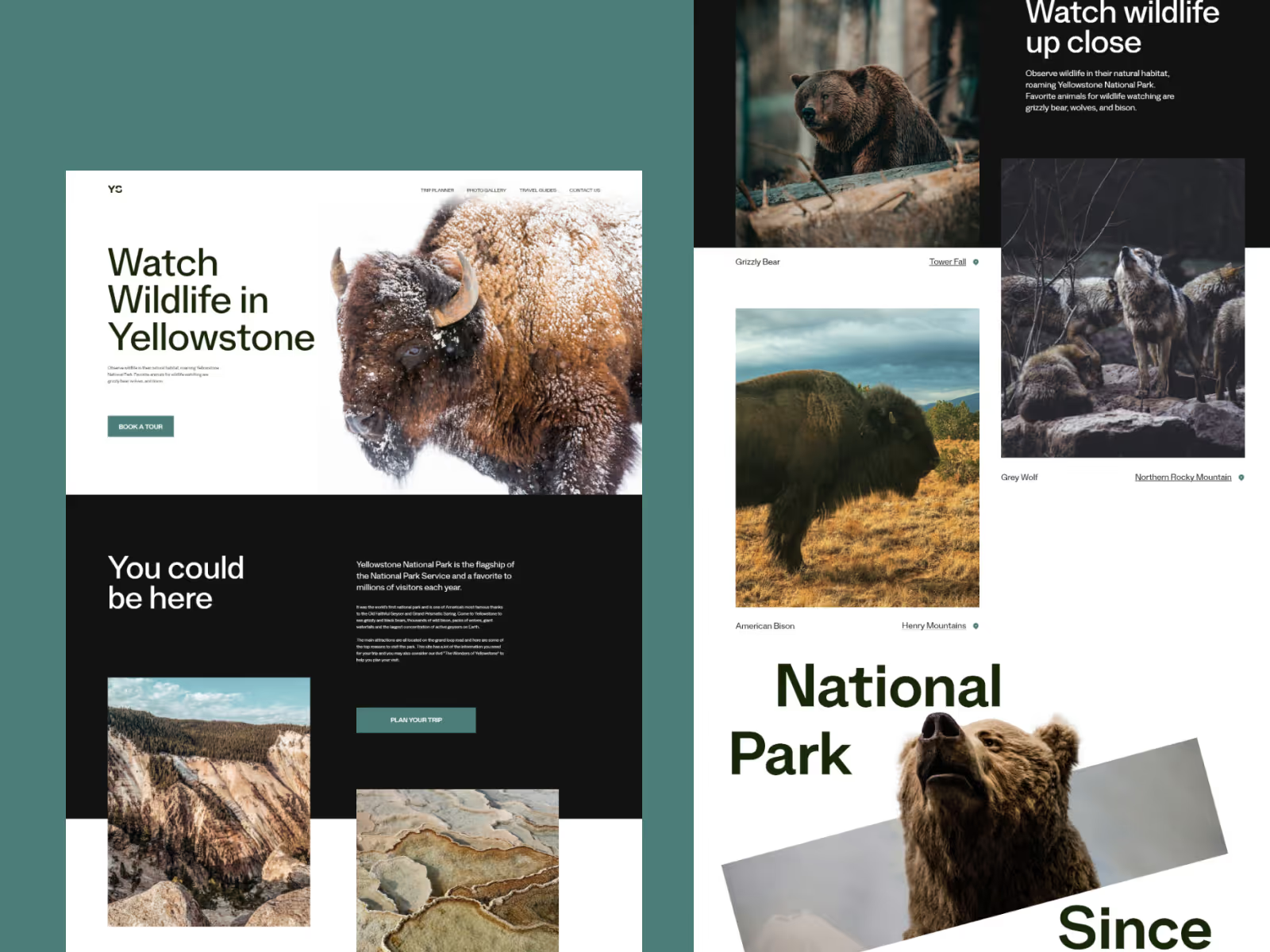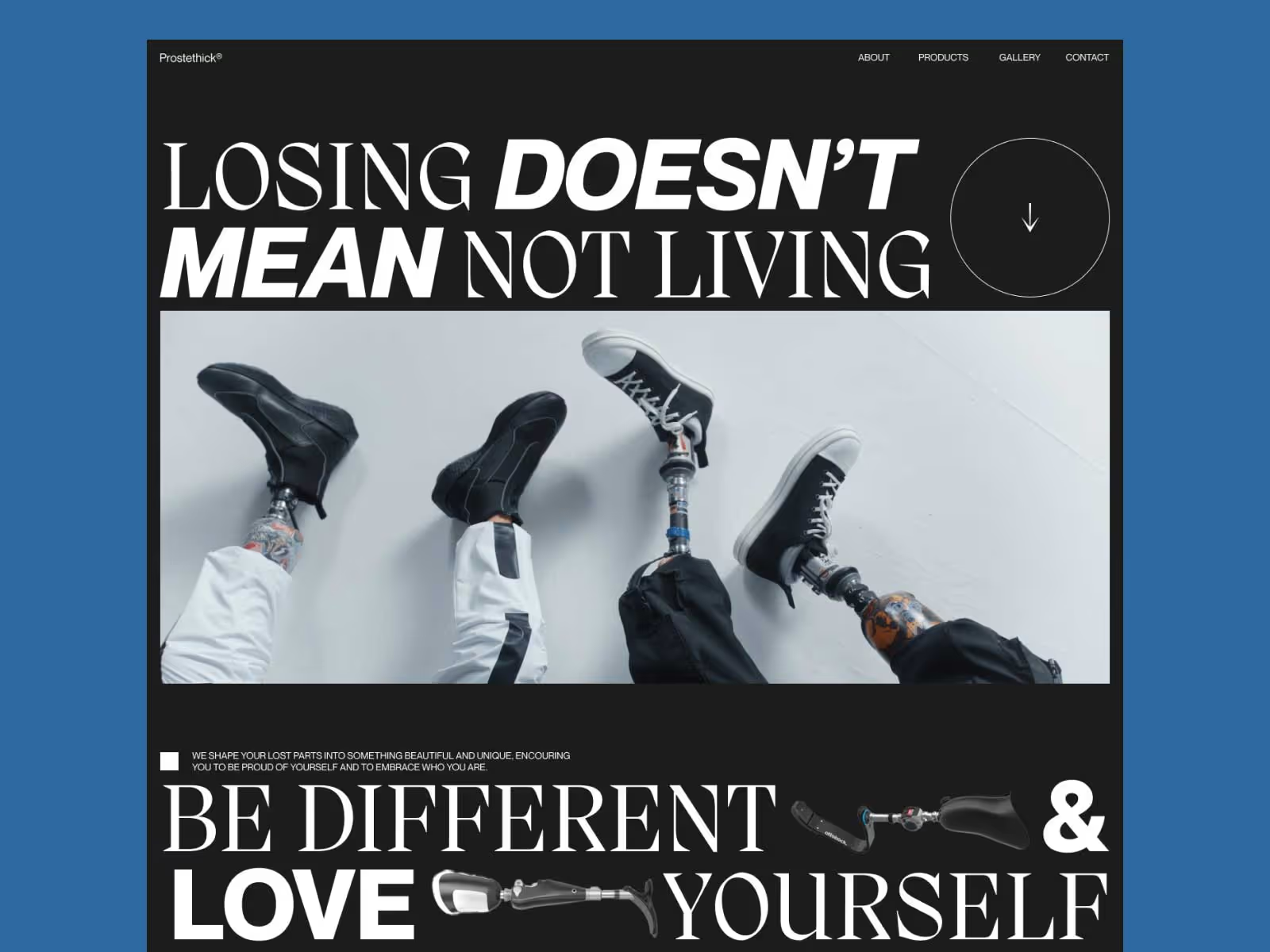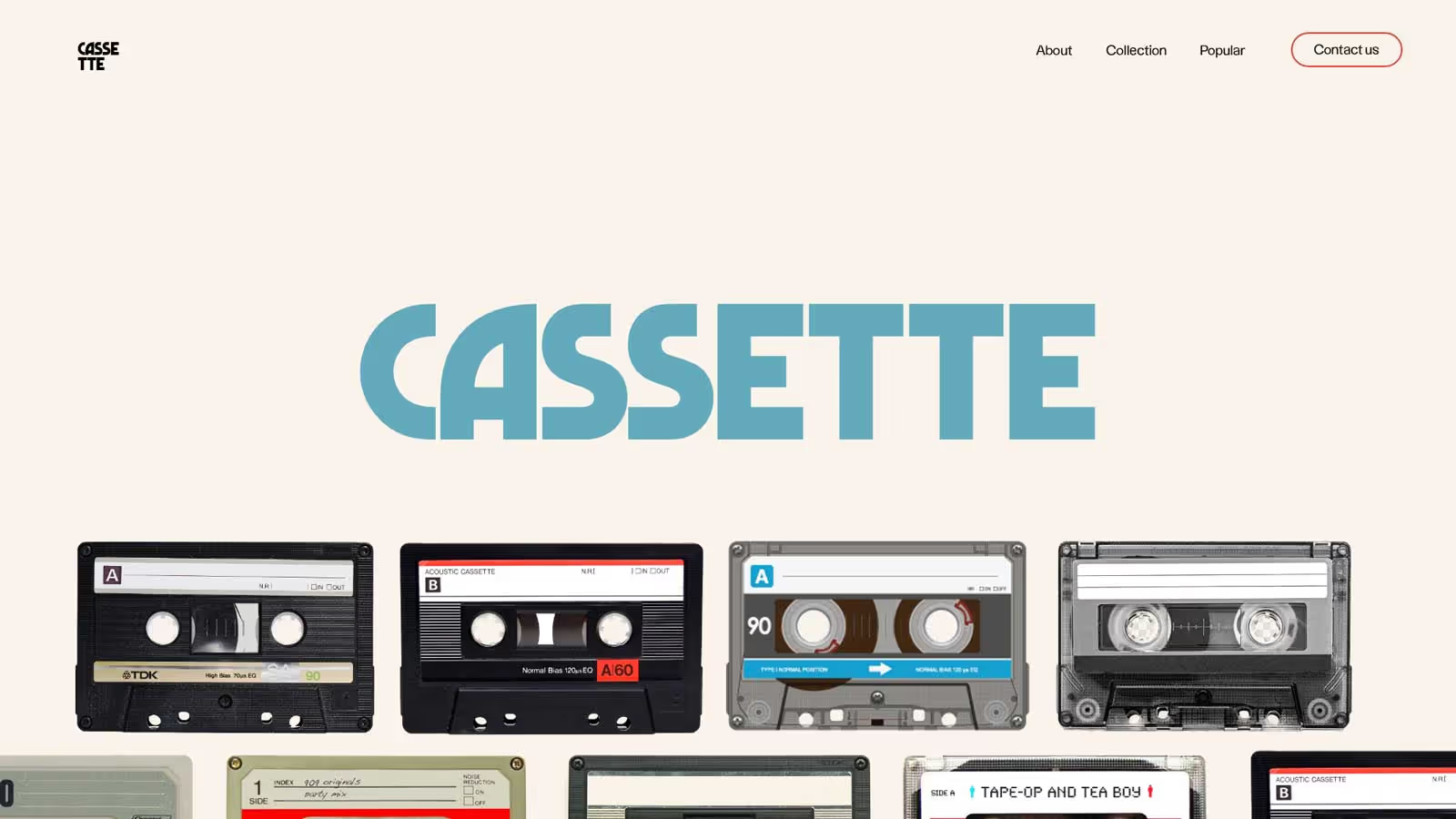
The year 2022 reshaped digital aesthetics with five key design trends: the Metaverse, NFT art, Eco design, Inclusion & Diversity, and Nostalgic Design. Each reflects cultural shifts, virtual experiences, digital ownership, sustainability, representation, and emotional connection. Designers now bridge technology and humanity: crafting immersive worlds, sustainable interfaces, inclusive visuals, and emotionally resonant retro-futurism. These movements define not just a visual style, but how design mirrors society’s values and aspirations.
It is already February, and it is becoming clear what the main topics in the design world are!
We are ready for new colors and shapes, and for new ideas. But, this year we want to push boundaries in design. The year 2022 is reserved only for big things and concepts that are life-changing. We notice many such concepts in various aspects of our life. As always, every influential topic reflects in the design and leaves a great impact, eventually becoming a big trend.
Today we are talking about 5 burning topics that shape our everyday life! We will explain to you how these topics are becoming huge trends in graphic design, UI and UX design, and digital art of all kinds.
These are the Big 5 Design Trends that will rule in 2022, and probably even longer!
1. Metaverse
We begin with a big trend that is undoubtedly conquering the world. And not only conquering but completely pushing the boundaries. It's Metaverse!
Metaverse is, in short, a 3D universe where various virtual worlds merge. The focus of these worlds is a social connection that will completely change the definition of socialization. Why? Because, fellows, it's about living and hanging out with people on a carefully designed virtual plane. Metaverse basically allows you to spend time in an imaginary world, separate from our tangible world.
For example, you all probably know about video games in which there is a so-called role play. In these games, you get to create a character the way you want and often assign specific features and traits to it. Then you enter the virtual game world with that character and, depending on how much freedom you have in the game, you can control its actions.
Well, the Metaverse universe works similarly - it's a virtual platform where people can create their characters or rather avatars and relive their experiences. Only, Metaverse is designed to offer much more freedom than the famous RPGs. Besides, this world is definitely not just a game. It is a whole new reality - a meta-reality - that presents a complex world. So, it's about another life, on a virtual level. It's about creating an avatar that can look the way you've always wanted to look. And it's about a new world where you can do many things that you can or cannot do in a real life. So far, sounds so liberating!
So, we are practically talking about a perfect simulation of life. And, it means a lot of work for designers! Yey! Because who else is behind this virtual world but developers, designers, and various digital artists!
One of the ideas of Metaverse is to make it easier to meet and interact with people who can live at great physical distances. We can say that Metaverse has fully visualized digital contact among people. Furthermore, it has created a vortex in which social media, digital art, and the power of IT merge. When it comes to Metaverse design, we have a lot of visuals that make up this amazing world! That’s why Metaverse is one of the huge trends affecting design, especially UI and UX!
Should we point out again that this whole universe is based on perfect graphics and amazing features that make up complex user interfaces? Metaverse is, after all, a whole new world. No wonder it shakes the foundations of our reality. And since it is made of digital elements, it is no wonder that it is one of the burning trends in design!

2. NFT Fever
Along with groundbreaking Metaverse, another ultra-popular trend is NFT! For those unfamiliar with NFT, these are any digital files sold through blockchain technology.
Most often, it's unique work, such as illustrations, paintings, audio recordings, etc. Some say this becomes a new modern-day collecting because NFT items are one-of-a-kind pieces that cannot be interchanged.
Some say NFT and blockchain technology have made it easier for artists to sell their visuals, illustrations, photographs, and even texts and audio recordings. Selling and buying in cryptocurrencies has certainly made it easier for customers to buy such authentic items from anywhere in the world. We say this is enough to push NFT as a top design trend!
Namely, people started buying NFT artwork end masse, most often illustrations and animations. These images often become profile pictures of people, a way of recognizing on the Internet, and even trademarks. As a result, artists started creating entire collections that allow customers to become part of a group with similar NFT characters.
NFT illustrations can become avatars too. Sounds familiar? Yes, Metaverse is also based on avatars who live in a virtual world. Well, in a similar way, NFT avatars become characters that represent real people online. And as more and more people want their authentic and interesting avatar, many digital artists are starting to make large collections of NFT visuals. And we have to say, they sell them for big money!
What makes NFT valuable and so popular is the diverse artwork that's behind the whole story. Truly, NFT visuals can be 2D, 3D, animated or not, and done in any style! They are often very amusing - from goofy and cute to cool-looking. Because of their versatility, they are conquering the world with ease.
For designers, that means one crucial thing. Apart from the fact that many artists are trying their hand at creating their NFT, designers are also thinking about displaying NFT items on the net. Yes, special NFT websites are ideal platforms for these items. UI designs related to NFT are also unique projects. Web design for NFT often includes the skills of animators, illustrators, UI/UX designers, developers, and creative writers.
That is why NFT quickly won the hearts of experts, artists, and users!

3. ECO Vibe
From a previous couple of years, to who knows when the fever of ecology will shake us! And we don't complain at all. Eco vibe in design is one of the favorite trends this year!
Natural tones predominate to raise the level of awareness of the state of the environment in which we live. The idea is for ecology to always be in front of our eyes: natural products, promotion of water, air, and land preservation, and services that improve health and life. Eco-design, therefore, means sending a message through concept, shape, color. Above all, the genuine picture of the situation and things is appreciated! That is why eco vibe shows products upfront, as they are in real life.
We have high-quality photos, accurate illustrations, and almost tangible content around eco topics. Materials and textures that originated from nature and can be returned to nature truly stand out. We also have a focus on recyclable products. The details of eco-design are therefore often realistic images of plants, flowers, animals, and the textures of wood, stone, and water. Even food and drinks can be presented in this fashion. After all, it's what we drink and eat that affects our health and the health of our planet!
And the colors? Ah, the colors are mostly warm, pastel, but also can be cool and calming. Shades of green, from deep forest green to gentle mint, refresh digital spaces and most often run campaigns related to health, cosmetics or wildlife, and nature. You can also see skin tones in designs that indicate that humans are still gentle beings and a delicate part of the ecosystem.
The key in coloring is that the colors look like ink samples taken directly from the outside. Like a drop of the sky or a trail of green leaf. This design is made to have a soothing look that captivates you in the long run. Because it is warm and caring, it calls to actions that will improve the life on the planet. The aesthetics of eco-design are bending our view on life and will rule the design stage for a very long time.
Eco-design educates users visually and shows all the good reasons why we should buy environment-friendly products.
And we are in! Hoping the eco vibe will follow us always.

4. Inclusion and Diversity
This trend is similar to eco-design and is based on equally good energy and respect!
It is about diversity among people - individuals, groups, nations, and cultures. And we must say that diversity was not always sufficiently expressed through design. At least not in a direct way. If the design is supposed to show the reality, there is no bigger truth than that we are all so diverse. So, this representation of our differences is something we humans have needed for such a long time. Luckily, this warming trend made it to the top 5 this year, and it will stay there!
Inclusion and diversity in design do not represent some popular aesthetic or functional element but surround and take over the whole concept. These concepts focus on relationships between people and successful communication of diversity! In other words, we celebrate being different! We accept and strive to understand each other, and we want to spread that to the whole planet. Fortunately, the Internet is the place to be.
That is why these designs are dominated by depictions of people, different nationalities, genders, ages, cultures, and the like. Whether it is photographs, illustrations, or some other elements, we always see a human, a figure that shows our thoughts, wishes, and needs. That is the most significant point of this trend. Visualizing the needs of any person on the planet, of any age, nationality, social, financial, health status, religion, and lifestyle in general.
The second most vital point of inclusion in design is promoting support. That's why today you can see many images showing the power of unity and cooperation between different people. Common elements are handshakes, high-fives, even hugs, and hand-holding. So, it's about connection and mutual understanding!
How is proudly wearing these designs? Well, many companies that want to send messages like:
"We are all important. We have common goals. Let’s create something great together."
These companies push the boundaries of prejudice and show together people of different skin color, weight, height, age, abilities, and disabilities. The goal of these companies is to get as close as possible to their customers. You will also see inclusion mostly in design for companies that deal with social work, health, marketing, finance, communications, travel, and the like. Anyway, that is an open question because human diversity can and should be shown in all activities in which people participate together.
In addition to being completely honest, this trend gives beautiful results both in UI design and in graphic posters and similar visuals. Above all, design with elements of inclusion and diversity is educational. That is why the Internet should be filled with them to raise awareness of mutual respect and support.

5. Nostalgic Design
Then, we have the nostalgia that simply exists in every period of history. Just giving flashbacks to another time. It is the trend that actually evokes the trends of the past and brings them back to modern design concepts! This year we are talking about an artwork time machine that sends us to the 70s, 80s, and 90s. But we are also talking about a retro look in general. In retro, there are old-looking photos, faded and washout colors with retro typography. These concepts are also full of illustrations that look like they were drawn by hand or using an older technique.
So, how is it possible that style where everything looks as if it has suffered the ravages of time, worn out and faded, has become a modern design trend? Why do we try so hard to make our latest and freshest designs look as aged as possible? What's the catch? Well, we have to admit that such designs look powerful. That's because it is obvious that only something good can stand the test of time.
Retro, vintage, and old-time looks give the impression of great experience, quality gained over time, and hard work. That is why this style sometimes seems to be much more enduring than fresh modern styles. At least, for some people. No wonder companies that have been in business for a long time are opting for the retro and vintage look. The products they offer can be homemade so they want to show the tradition of long and quality production.
Besides, any business that includes products and services related to past times can have this nostalgic touch in the brand. Just look at sites related to specific music genres, art, or literature. To show that they have picked up the best of tradition, services related to travel, catering, food, and drink are also full of nostalgic elements. You surely have seen a nostalgic-looking brand of a pub or restaurant serving some traditional food, craft beer, or old wine!
Not to mention old-time vehicles and technology products! The worn-out look has become synonymous with enduring. But, there is also something else in these designs that draws our attention.
Simply, nostalgia.
Specific coloring and characteristic elements can bring to the present only the best of the past. That is why some people believe that the past trends are somehow warmer and friendlier than modern ones. The beauty of nostalgia in design is that it can highlight some quality detail that has been lost over the years. And that can look so chic. The point of this trend is simply to bring back to life all that was once good! And in fact, nostalgia sneaked not only into the present but also into the future! We see it in a retro-futuristic movement that impressively refreshes old colors and techniques.

3.1 Retro-Futurism
What is retro-futurism now?
Well, let's say it's a transfer of the best elements of nostalgic design, from colors, icons, and illustrations characteristic for the 70s, 80s, or 90s to modern concepts. This look is modernistic and progressive! In glowing, sharp, cyber-looking design, it slips in elements that are familiar to us. And while the futuristic look gives a high-end, cool vibe, the retro elements create warmth around them. Nostalgia in futuristic designs spreads the friendly vibe of what has already been seen, known, and embraced.
To conclude, in nostalgic graphics and UI designs, you will always see some recognizable detail, depending on the period. Clipart from the 90s covers the design with images of Converse sneakers, roller skates, VHS, and tape recorders. In the 80s, everything is about rock and vinyl record plates, and if you start to see hippie details everywhere, you are definitely in the 70s!
So, nostalgia can be either experienced-looking or bubbly cheerful. Old-fashioned or modern. In any case, these elements have returned because they are evergreen.
And the nostalgic trend is back because we want it back!


.svg)
.svg)


